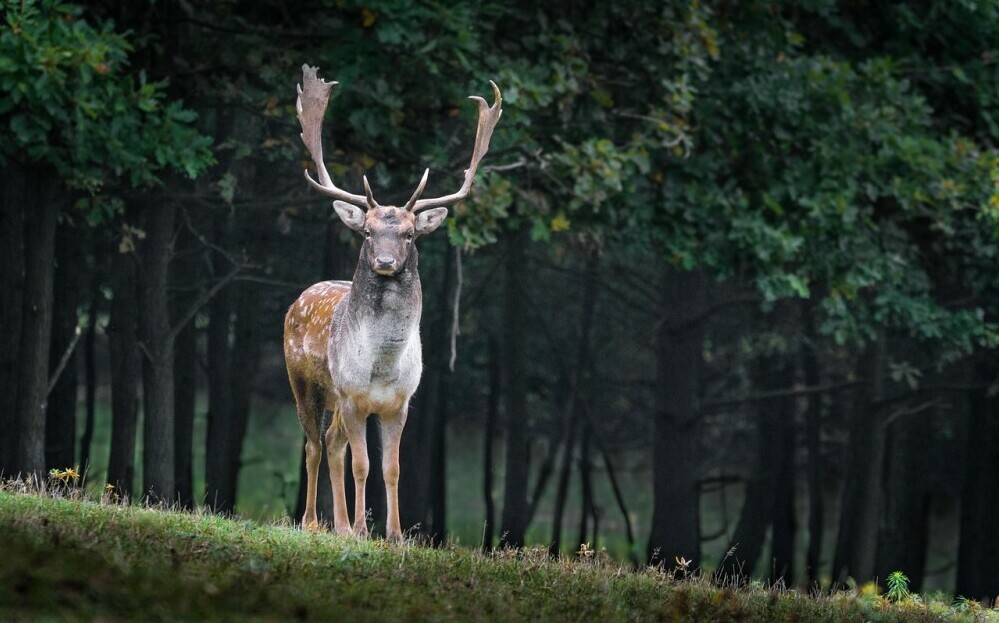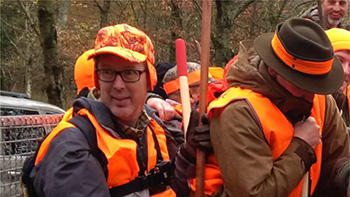
I’m going to introduce you to an ecological puzzle that’s unfolding in the forests of Germany. We’re talking about the role of deer, elegant and vital parts of the ecosystem, but whose numbers are tipping the scales in ways that could hurt the forest’s future.
You’re going to find out about how an abundance of these creatures can throw a wrench into the delicate balance of biodiversity. Deer overpopulation leads to increased feeding on young trees and ground vegetation, which can profoundly affect the vegetative structure of forests.
We’ll explore how these overgrazing habits can stifle forest regeneration, leaving some plant species at risk and altering the habitats of other wildlife. This isn’t just about too many deer; it’s also about the cascading effects on the entire forest ecosystem which includes insects, birds, and small mammals whose survival depends on a diverse understorey.
And finally, we’ll wrap up this section by diving into the implications for forest health—how robust ecosystems with a variety of flora and fauna can diminish if deer populations continue to rise unchecked.
The Science and Ethics of Deer Management Strategies
Managing deer populations within German forests involves a delicate balance of scientific knowledge and ethical practice. It’s crucial for us to use evidence-based methods while respecting the welfare of wildlife. Here’s how this can be achieved:
Deer management isn’t guesswork; it requires a scientific approach. Wildlife biologists employ data-driven techniques such as population surveys and habitat assessments to determine the necessary interventions for maintaining a sustainable deer population.
Germany utilizes a range of management strategies. Culling, or selective population reduction, is often employed. This may include regulated hunting at certain times of the year. Another method is habitat manipulation, making the environment less conducive for deer to overpopulate.
Now, ethics come into play. While culling is effective, it raises important ethical questions regarding animal welfare. That’s why Germany enforces stringent regulations and promotes ethical hunting practices, ensuring any culling is carried out humanely and responsibly.
Moreover, it’s essential to consider the perspective of local communities, including hunters, residents, and conservationists. Open discussions and collaborative decision-making have been vital in creating management plans that reflect shared values and lead to more effective outcomes.
In managing deer populations, stakeholders must navigate complex intersections of ecological needs, human interests, and animal rights. The strategies adopted are constantly refined to align with the latest research findings, ethical standards, and social considerations.
Innovative Practices for Balancing Deer Populations and Forest Conservation
I’m going to walk you through the forward-thinking solutions that have been paving the way for more effective deer management in German forests. It’s exciting to see how innovation intersects with conservation when it comes to sustaining ecosystem balance.
In Germany, we’ve seen several case studies of successful deer management practices. For instance, the integration of advanced GPS tracking has revolutionized the way forest managers monitor deer movements and assess population densities.
You’re going to find out about emerging methodologies that have been game-changers, such as drone surveys and predictive population modeling. These tools have proven invaluable in making informed decisions regarding deer populations.
Education and public awareness are also key components to the success of these programs. Initiatives to bring communities closer to the issues at hand ensure ongoing support and understanding for necessary deer management activities.
I’m here to help you grasp the big picture: It isn’t just about preserving the present state of forests. It’s also about ensuring the sustainability of these ecosystems for future generations. This responsibility extends beyond Germany and serves as a critical lesson for forest conservation efforts worldwide.
Choose something that resonates with you when it comes to contributing to these efforts. Whether it’s through supporting local conservation programs or staying informed on these issues, every action counts in the larger scheme of forest ecosystems management.
In my opinion, the future of deer management is likely to involve a combination of technology, community efforts, and cross-disciplinary research. It’s about finding a balance that respects both the needs of wildlife and the integrity of our forests.

Deer management is a critical aspect of maintaining ecological balance in forests, and it’s fascinating to see how Germany approaches this complex issue. The emphasis on sustainability and biodiversity through controlled hunting practices reflects a deep understanding of ecosystem dynamics. I appreciate the detailed insights into population control strategies and their ecological impact. As a conservation enthusiast, I’m curious about the community’s perspective on balancing wildlife preservation with sustainable forestry practices.
Ashley, thanks for the comments. The hunting community is very close over here in Germany, From knighting ceremony’s of the young hunters once they’ve passed the long and intense hunting course to the gathering of hunters to assist with drive hunts in one another’s areas of responsibility. After completion of the drive hunt there is a ceremony to pay respect to the animals that were obtained and a dining together of the hunters.
However, there are those few who oppose hunting and have been known to sabotage the hunters’ seats that can stand up to 30 feet above the ground.